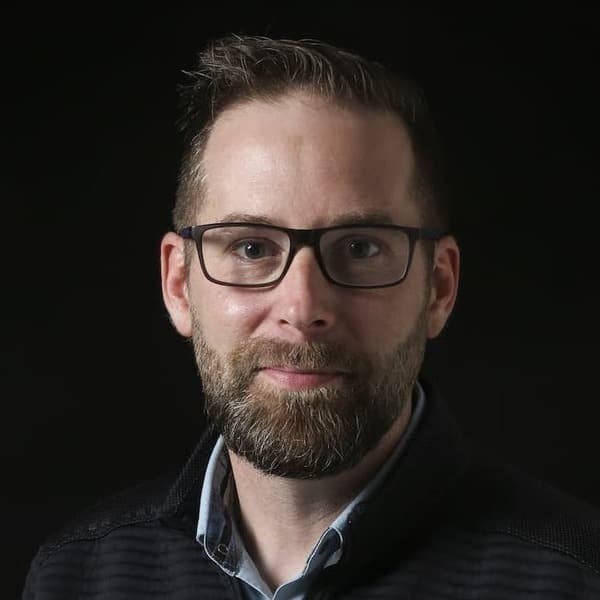Fostering Change in Schools Through Community-Activated Design
When it comes to improving student outcomes, particularly for students of color and those with adverse childhood experiences, innovative approaches are essential. That’s where Notre Dame’s Professor Clinton Carlson comes in, with their pioneering use of Community-Activated Design (CAD) within the South Bend Community Schools Corporation’s (SBCSC) Restorative Justice in Education (RJE) initiative.
Supported by the ISLA Annual Research Theme Grant, community partnerships and SBCSC leadership, Carlson is leading workshops aimed at fostering equitable and positive school cultures through visual communication design, participatory action research, and social mobilization principles. The goal is clear: empower students and educators to engage in restorative justice practices that prioritize responsibility, respect, and relationship-building.
It is Carlson’s belief that restorative justice is more than a policy; it’s a shift in how we think about discipline and relationships in schools. And that through CAD, we’re able to activate students and staff as co-creators of change, developing a sense of community ownership in the process.
A crucial initiative
SBCSC’s RJE initiative aims to create a more inclusive environment by addressing the disproportionate exclusion of students of color and students with trauma from instruction for disciplinary reasons. Restorative justice places these students back at the center of academic achievement by fostering conflict resolution and building life-long skills for healthy relationships.
In December 2020, the first CAD workshop brought together students, faculty, and administrators at Riley High School in South Bend to explore how visual campaigns — including murals, student posters, and installations — could open community dialogue around RJE.
With the additional funding received, the project expanded with a series of CAD workshops designed to create visible campaigns throughout Riley High School and the surrounding community. The workshops are meant to create long-term, meaningful change while engaging students and staff in the design process.
Collaborative workshops
The subsequent CAD workshops were structured to involve all members of the school community, with methods drawn from visual communication design and public health research. For this event, they were not just designing posters, but creating a toolkit for dialogue, for students and staff to discuss what matters to them, and to make those conversations visible throughout the school.
Workshops included hands-on sessions where students and faculty collaborate to create visual installations that reflect the school community’s values and goals. This process not only fosters community ownership but also supports SBCSC’s district-wide goals of building positive school cultures that benefit all students.
Building a toolkit for the future
As Carlson and his team continue to develop the CAD workshops, they’re also creating a toolkit to support other schools in implementing RJE approaches. This toolkit, which will include posters, stencils, stickers, and online resources, will be designed to be adaptable and reusable in various school contexts.
The project’s broader impacts are clear. By using design as a tool for social change, this research contributes to a growing understanding of how participatory design methods can address systemic issues in education, health, and well-being.
What he is doing is creating a model that can be used in other schools and communities, to ensure that schools have the tools they need to foster environments where every student feels seen and supported.
Through collaborative workshops and community-driven design, Carlson is working to transform schools into spaces where equity and justice are at the forefront of every student’s experience.
Originally published by at isla.nd.edu on September 23, 2024.
Latest Research
- Smarter tools for policymakers: Notre Dame researchers target urban carbon emissions, building by buildingCarbon emissions continue to increase at record levels, fueling climate instability and worsening air quality conditions for billions in cities worldwide. Yet despite global commitments to carbon neutrality, urban policymakers still struggle to implement effective mitigation strategies at the city scale. Now, researchers at Notre Dame’s School of Architecture, the College of Engineering and the Lucy Family Institute for Data & Society are working to reduce carbon emissions through advanced simulations and a novel artificial intelligence-driven tool, EcoSphere.
- Seven engineering faculty named collegiate professorsSeven faculty members in the Notre Dame College of Engineering have been named collegiate professors—a prestigious title awarded by the university and college in recognition of excellence in research, teaching and service. The designation may be conferred on faculty at the assistant, associate or…
- ‘A special challenge’: German studies scholar wins National Humanities Center fellowship for research on medieval womenFor CJ Jones, the joy of research is not the answers but the journey. And the next step on that journey is a fellowship with the National Humanities Center. …
- Notre Dame Lead Innovation Team partners with local WIC program to identify, prevent lead poisoning in childrenB.A.B.E. store “shoppers” now have something new to help their families: free lead screening kits offered by the University of Notre Dame’s Lead Innovation Team.
- Notre Dame Welcomes Ninth Cohort of Warrior-Scholars for Transformative Academic JourneyNOTRE DAME, IN – The University of Notre Dame recently concluded its ninth successful Warrior-Scholar Project (WSP) boot camp, hosting 34 dedicated Warrior-Scholars from June 21st to 28th. This intensive, week-long academic residency provided transitioning service members and veterans…
- Entrepreneurship and Empowerment in South Africa study abroad program celebrates 25 yearsThis year, the Entrepreneurship and Empowerment in South Africa (EESA) program marked its 25th year of operation. EESA is a six-week summer study abroad program that enables students to help historically…













